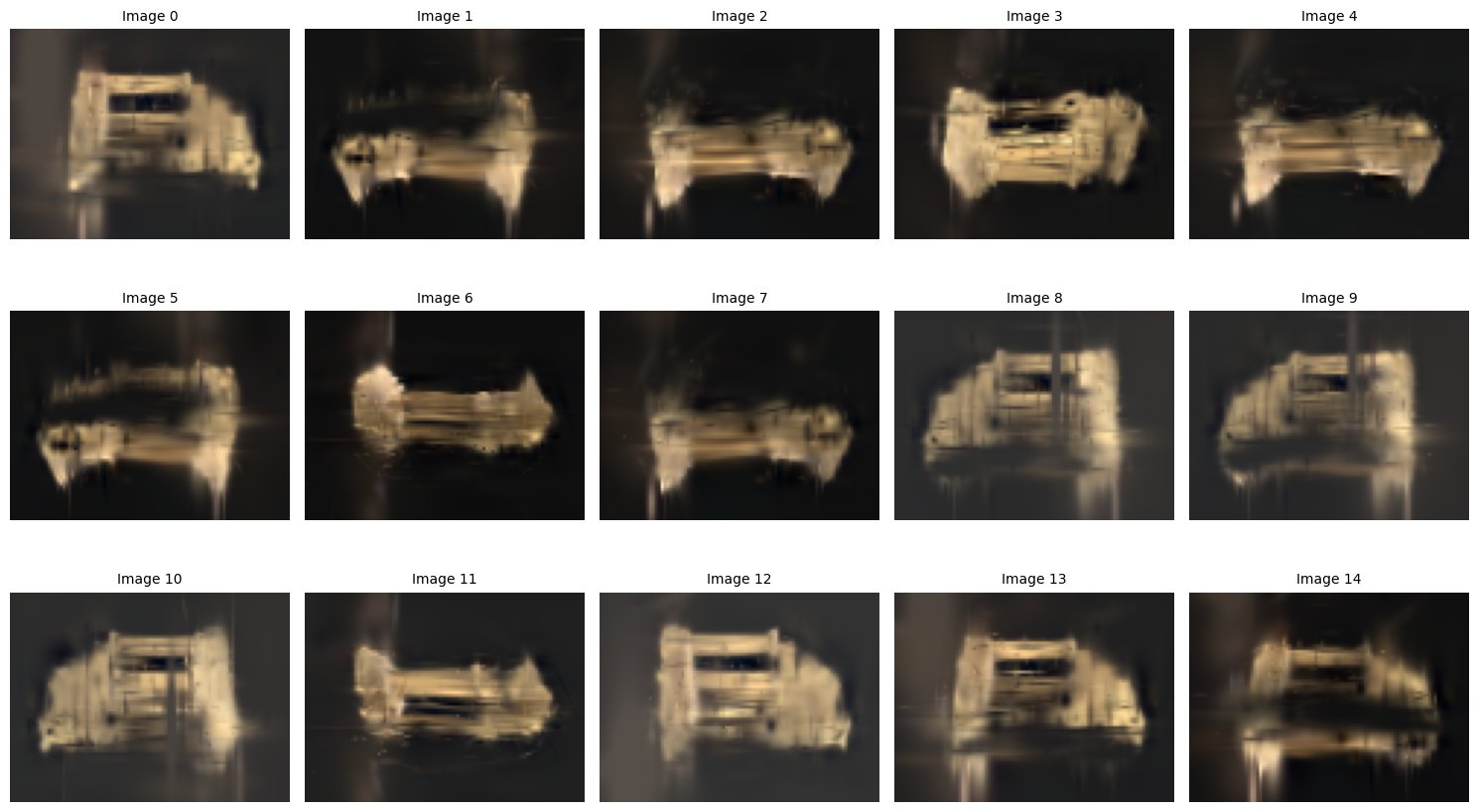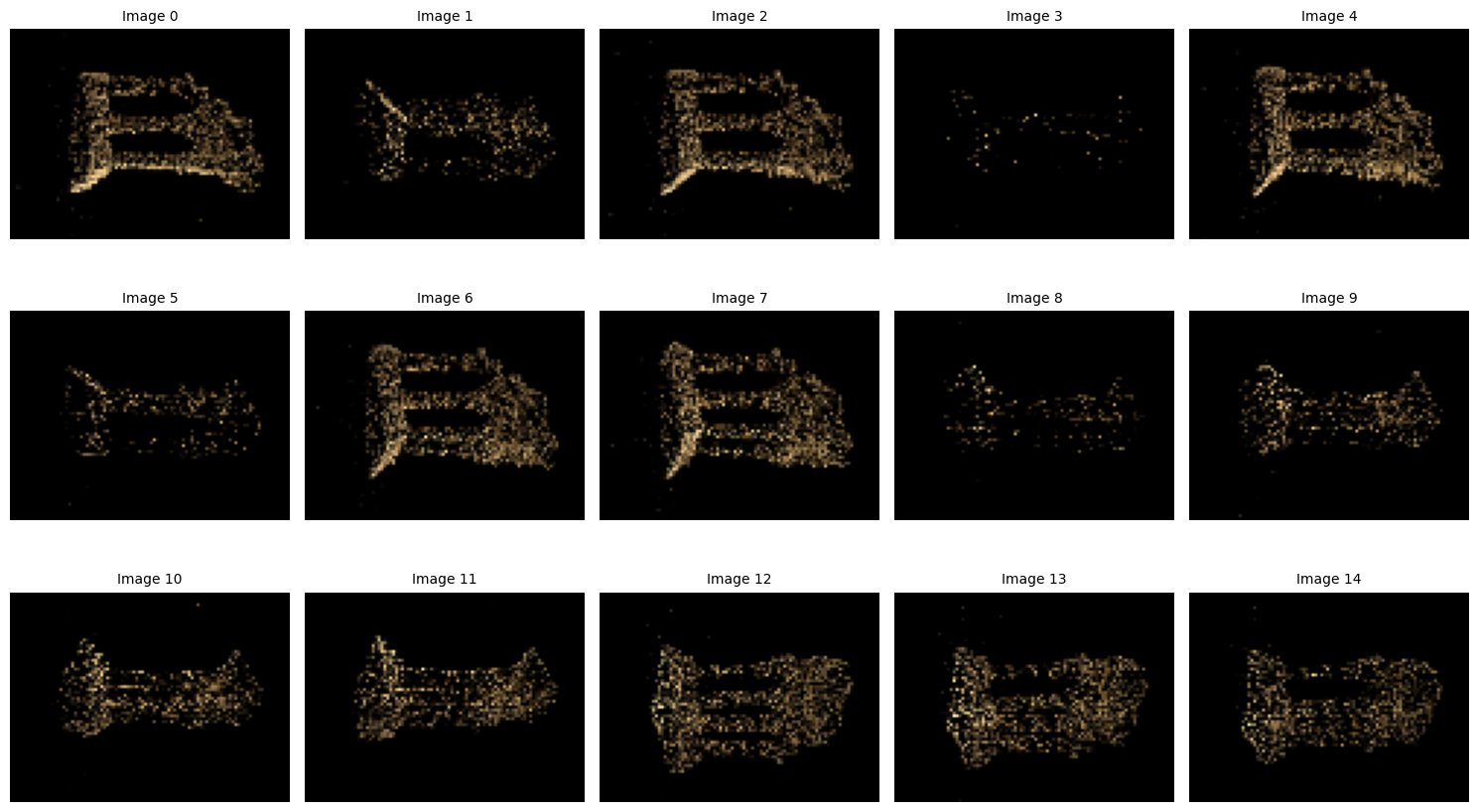A minimal, portable Gaussian Splatting sandbox for rapid small-scale experimentation and performance insights in pure Python.
Gaussian LiteSplat is a fully functional Gaussian Splatting framework implemented entirely in Keras (with Torch backend support).
It’s designed as a lightweight, open-source sandbox for researchers and developers to:
- Prototype fast,
- Experiment freely, and
- Understand performance behavior in a clean, dependency-minimal environment.
A minimal, portable Gaussian Splatting sandbox for rapid small-scale experimentation and performance insights in pure Python.
Result Showcase
2200 Gaussians · Trained 45 minutes · 15 Cameras · TempleRing dataset
TempleRing.zip — Middlebury Multiview Dataset
Gaussian Splatting is a cutting-edge 3D representation technique that models a scene as a set of learnable 3D Gaussian primitives.
Each Gaussian defines a point in space with position, color, opacity, and scale — allowing highly efficient, differentiable rendering of complex scenes from multiple camera views.
Unlike mesh or voxel-based methods, Gaussian Splatting provides:
- Continuous, smooth surfaces using anisotropic Gaussian functions
- Real-time rendering capabilities with high-quality reconstruction
- Better scalability for neural radiance fields (NeRF)-like tasks
Gaussian LiteSplat is a minimal, portable Gaussian Splatting sandbox implemented entirely in Keras (Torch backend) — no CUDA dependency required.
It is designed for researchers, educators, and developers who want to understand, prototype, or test Gaussian Splatting on CPU or lightweight GPU setups (including Google Colab).
Key motivations:
- Make Gaussian Splatting accessible without high-end GPUs
- Enable rapid experimentation on small-scale datasets
- Serve as a learning and benchmarking tool for further research
-
🧭 COLMAP Importer
Import scenes directly from COLMAP reconstructions (supportsSIMPLE_PINHOLE,PINHOLE, andSIMPLE_RADIAL(withoutk)). -
🔧 End-to-End Training
Import → Train → Export Gaussians in a simple, modular pipeline. -
🌈 Trainable RGB Color Support
Simplified color representation — only RGB (no spherical harmonics as in the original paper). -
🧮 Lightweight and CPU-Compatible
Runs entirely in Python and Keras (Torch backend) — no CUDA required. -
⏱️ Fast Experimentation
Train a few thousand Gaussians and start seeing results within minutes to hours. -
☁️ Google Colab Friendly
No complex environment setup — works with default Colab installs. -
🧪 Ideal For
- Low-resolution or small-scale reconstruction experiments
- Projection and efficiency testing
- Teaching or demonstrating the concept
- Quick research prototyping
Gaussian LiteSplat is not a replacement for the original CUDA-accelerated implementation —
it’s a simplified, research-friendly version that emphasizes clarity, portability, and learning.
Perfect for exploring the fundamentals of Gaussian Splatting on any machine, even without GPU support.
Gaussian LiteSplat can be installed in two ways depending on your use case:
Use this if you only need the core Gaussian LiteSplat framework for importing, training, and rendering:
!pip install git+https://github.com/abhaskumarsinha/Gaussian-LiteSplat.gitThis installs only the main package and its runtime dependencies — perfect for Google Colab, light experiments, or embedding into your own projects.
Use this if you want the complete toolkit, including benchmarking scripts, training templates, and utilities for end-to-end experiments.
!git clone https://github.com/abhaskumarsinha/Gaussian-LiteSplat.git
%cd Gaussian-LiteSplat
!pip install -r requirements.txtThis setup includes:
- Benchmarking utilities
- Dataset templates
- Predefined training configurations
- Example scripts for reproducing results
✅ Tip: Both installations work seamlessly on CPU and GPU (if available). No CUDA setup is required — everything runs with Keras (Torch backend) out of the box.
Once installed, you can start training directly from a COLMAP reconstruction using the provided training script.
In the Gaussian-LiteSplat directory, run:
!python ./scripts/train_colmap.py \
--colmap_scene "[path_to_COLMAP_export_in_NeRF_format]" \
--litesplat_scene "[path_to_save_litesplat_scene]" \
--images_dir "[path_to_COLMAP_images_dir]" \
--output_dir "output" \
--torch_compile \
--output_h 76 \
--output_w 102 \
--total_gaussians 2200 \
--log_level DEBUGBelow is an example experiment comparing the initial imported COLMAP scene and the trained Gaussian LiteSplat output.
The dataset used is TempleRing from the Middlebury Multiview Dataset,
featuring 15 camera views. The scene was trained with 2200 Gaussians for ~45 minutes on a GPU setup.
- The imported COLMAP scene provides sparse geometric information from Structure-from-Motion reconstruction.
- Despite no CUDA or SH color support, LiteSplat efficiently learns compact Gaussian representations suitable for small-scale research.
- Results begin to appear within minutes, making it ideal for testing projection, training dynamics, or dataset preprocessing.
⚡ These results demonstrate that even a simple GPU, minimal implementation of Gaussian Splatting can produce
meaningful multi-view 3D reconstructions with limited hardware and simple training pipelines.
To help you get started quickly, Gaussian LiteSplat includes a set of ready-to-run Jupyter notebooks
available in the /notebooks directory of the repository.
These notebooks demonstrate:
- 🔹 End-to-end workflow — importing a COLMAP scene, training Gaussians, and visualizing results
- 🔹 Step-by-step explanation of LiteSplat internals (renderer, projection, and training loop)
- 🔹 Example experiments for benchmarking and low-Gaussian-resolution studies
- 🔹 Visualization utilities for comparing COLMAP vs trained LiteSplat scenes
Each notebook is Colab-compatible — simply open it in Google Colab with no additional installations required.
Just make sure to select the Torch backend for Keras if prompted.
- Kerbl, Bernhard, et al. "3D Gaussian splatting for real-time radiance field rendering." ACM Trans. Graph. 42.4 (2023): 139-1.
If you find Gaussian LiteSplat useful in your research, teaching, or experimentation, please consider citing it:
@misc{Sinha2025GaussianLiteSplat,
author = {Abhas Kumar Sinha},
title = {Gaussian LiteSplat: A Minimal, Portable Gaussian Splatting Framework in Keras},
year = {2025},
howpublished = {\url{https://github.com/abhaskumarsinha/Gaussian-LiteSplat}},
note = {A simplified, CPU-compatible Gaussian Splatting implementation for small-scale experimentation and research.}
}









